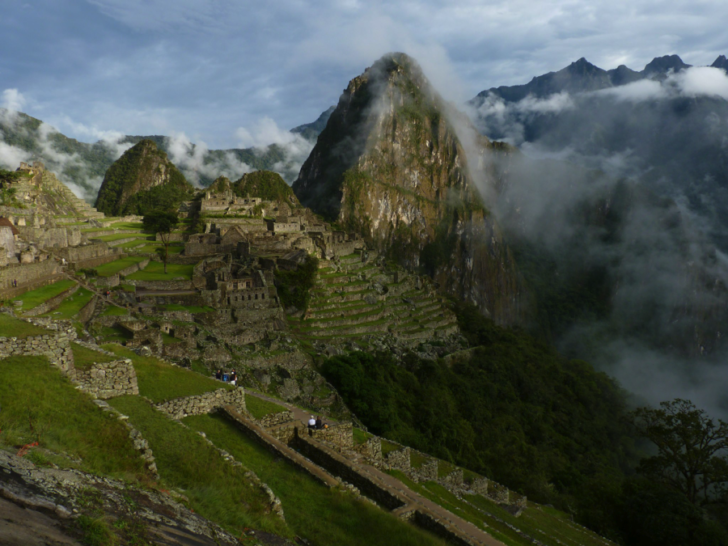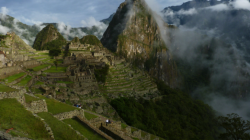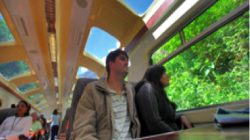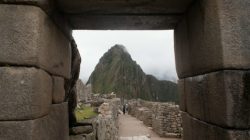Hello, travel hackers. Allow me to (briefly) introduce myself as a friend and former colleague of your blog host, Scottrick. I am not much of a travel hacker, but I do use a lot of this information to my benefit. Because of this fact, you probably won’t find many explicit travel hacking tips in my posts. However, I recognize that this website provides a valuable (and informative) resource to many, and I hope that my posts can be useful in their own right.
Two vacations ago, Scottrick asked me to write a brief trip report for this site. Better late than never. What follows is not so much a trip report, but a guide. I find these much more useful, and I have included in this post several links to resources that we used in our travels. This report/guide is from my most recent vacation – as in, not the vacation that scottrick asked a report for – and covers some of the basics of visiting Machu Picchu.
I’ve broken up this report into three parts in order to make this information a little more digestible. This first post describes some of the preparations you can make in advance of your trip to Machu Picchu. While Peru is a large and diverse country with plenty of worthwhile attractions, Machu Picchu is unquestionably the country’s highlight. If you have not seen it yet, then it would be a travesty to visit Peru without doing so. The downside here is that every other tourist in the country is making similar plans, so it pays to be prepared.
Check out Part II: Getting There and Part III: Visiting the Ruins of Machu Picchu
Reading Material
In order to preserve their national landmark, the Peruvian government has (wisely) restricted access to Machu Picchu. Therefore, visiting the site is a relatively expensive and time-consuming excursion. This is another reason why visiting Machu Picchu is an imperative that should be undertaken sooner, rather than later, before the Peruvian government begins imposing more travel restrictions. In any event, I like to be prepared, and a number of blogs and publications proved very useful for this visit.
Generally speaking, I tend to travel with the most recent travel guide published by one of the more recognized publishers (Lonely Planet, Rough Guide, et cetera). At the time of this writing, the most recent guide for Peru is published by Frommer’s. This tour book proved reasonably helpful for us, with decent maps and mostly accurate information. Another source of practical information for Machu Picchu comes from Travel By Points, a blog that is probably familiar to many readers here.

Perhaps the most important literature that I used on this trip was the Machu Picchu Guidebook, which is published by two of the leading archaeologists at this site. The layout of this book, and especially its maps, could use improvement. However, the guide provides excellent historical context and avoids the unhelpful speculation that is a common weakness among tour guides. If you plan to spend a full day at Machu Picchu, as I did, then you can pretty much cover everything in this book, save for a few far-flung sites. I also would like to plug this travelog from cultural dysphoriac, which provides some nice insight into the remarkable engineering that went into building Machu Picchu.
Admission to Machu Picchu
Here again, Travel By Points has you mostly covered. However, there is one additional way to acquire tickets to Machu Picchu that is not covered in the linked blog post, or anywhere else for that matter. That option is to buy the tickets from the IPERU information booths. This can be done immediately upon arrival, as there are there are at least two IPERU information booths in Lima’s international airport: one exists in the international arrivals area, and the other is located in a second floor hallway between the international and domestic terminals. You can acquire tickets at these booths. You then have to pay for those tickets at a branch of the Banco de la Nación del Perú (Peruvian national bank).
According to the IPERU guides, a location of this bank exists in the airport, but we were unable to find it. However, there are several locations in Lima, including at least two within the downtown area and one in Miraflores. This website has a short list of national bank addresses in Lima. For an added fee, your taxi driver can take you to one of these branches en route to your hotel. Lines at the national bank are long, but tourists can sometimes expect preferential treatment. This may present an awkward situation for some, but your best option is probably just to go with it. Remember that you will need to bring plenty of cash: the national bank does not accept credit cards, although they do accept US currency.
Of the alternative methods of payment, I wish you luck if you opt to buy the tickets from the Machu Picchu website. The payment system for this website is notoriously unreliable. If you decide to go this route, you need to be enrolled in the Verified by Visa program. Even with that certification, you may encounter considerable difficulty in securing tickets to Machu Picchu this way. Another option is to arrange to have a licensed tour operator buy your tickets for you. This may be a good idea if you plan to travel during the high season, where tickets potentially sell out weeks in advance. However, keep in mind that you will be charged a surcharge (we were cited $15/ticket) and that these companies require payment by wire transfer.
NEXT UP: Getting to Machu Picchu





